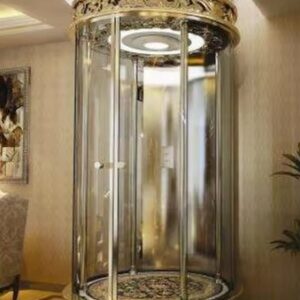Elevator Lift for Residential
An elevator lift for residential use enhances accessibility, convenience, and luxury in homes. Designed for multi-story houses, it allows easy movement between floors, especially for elderly individuals and people with mobility challenges. Modern residential lifts come with advanced safety features, stylish designs, and energy-efficient technology, making them a practical investment.
Product Description
Elevator Lift for Residential Use
An elevator lift for residential use is a modern solution that enhances accessibility, convenience, and luxury in multi-story homes. These lifts provide a seamless way to move between floors, making daily life easier for families, elderly individuals, and people with mobility challenges. Unlike commercial elevators, residential lifts are designed with compact structures, aesthetic appeal, and energy-efficient systems, making them a practical investment for homeowners.
Benefits of Residential Elevator Lifts
A residential elevator lift offers numerous benefits, making it an essential feature in modern homes. One of the primary advantages is improved accessibility. For individuals with mobility issues, using stairs can be challenging and unsafe. A home lift eliminates these concerns, allowing easy movement between floors without physical strain.
Another significant benefit is increased property value. Homes equipped with an elevator lift are more attractive to potential buyers, especially those looking for long-term accessibility solutions. This added convenience can significantly boost the resale value of a property.
Residential lifts also enhance safety. Many modern elevators are equipped with advanced safety features, including emergency stop buttons, backup power systems, and smooth braking mechanisms. These features ensure a secure and comfortable ride for users of all ages.
Types of Residential Elevator Lifts
Home elevator lifts come in different types, each designed to suit specific needs and space constraints. Hydraulic elevators operate using fluid pressure and are known for their smooth and quiet movement. They are ideal for low to mid-rise buildings and require a small machine room for operation.
Traction elevators use counterweights and cables to move the lift between floors. These are commonly used in high-rise buildings due to their energy efficiency and durability. They offer a faster ride compared to hydraulic lifts and require minimal maintenance.
Pneumatic elevators, also known as vacuum lifts, are a popular choice for residential applications. These lifts operate using air pressure, eliminating the need for cables or pulleys. They are compact, easy to install, and energy-efficient, making them ideal for small homes or spaces with structural limitations.
Key Features of Residential Elevator Lifts
Modern residential elevator lifts come with advanced features that enhance comfort, efficiency, and aesthetics. Many models offer customizable cabin designs, allowing homeowners to choose from different finishes, materials, and lighting options to match their interior decor.
Safety features such as automatic door locking systems, emergency alarms, and overload sensors provide an added layer of security. Additionally, many elevators are designed with smooth acceleration and deceleration technology to prevent sudden movements, ensuring a comfortable ride.
Energy efficiency is another crucial factor in residential lifts. Many modern elevators are designed with low power consumption systems, LED lighting, and smart controls that optimize energy use. This not only reduces electricity costs but also makes the lift an eco-friendly addition to the home.
Installation and Maintenance
Installing a residential elevator lift requires professional expertise to ensure safety and efficiency. Homeowners must consider factors such as available space, weight capacity, and the number of floors when choosing the right lift. Proper installation ensures smooth operation and long-term durability.
Regular maintenance is essential to keep the lift functioning optimally. Scheduled inspections, lubrication of mechanical parts, and software updates help prevent breakdowns and extend the lifespan of the elevator. Many service providers offer maintenance contracts to ensure reliable performance and immediate assistance in case of issues.













Reviews
There are no reviews yet.